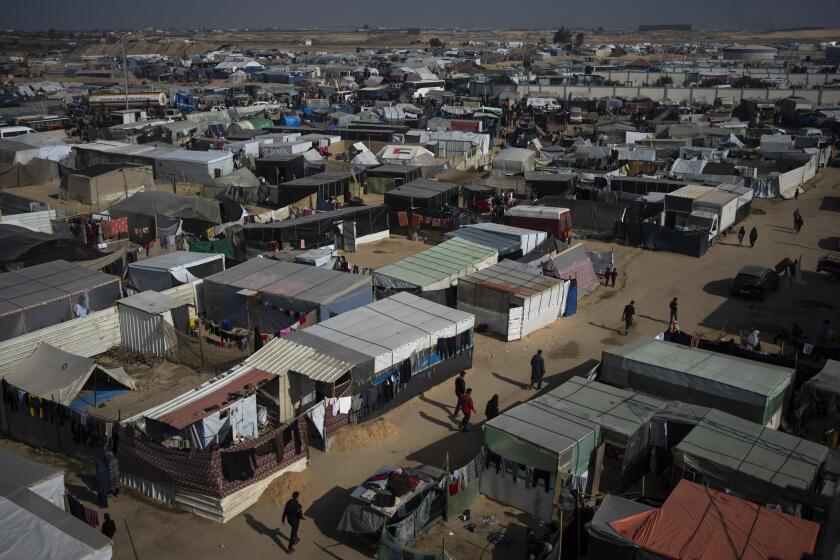Salinas’ Secret Issue Was Good Government : Mexico: The PRI’s big win doesn’t ensure its dominance. Further economic liberalization is impossible while maintaining a fossil political system.
The conventional wisdom after the overwhelming victory of Mexico’s governing party, the Institutional Revolutionary Party (PRI), in the Aug. 18 elections is that the country’s political future will look like its past. Nothing could be further from the truth. Mexico may still be governed by the PRI in the year 2000, but only if the party delivers what Mexico’s increasingly sophisticated and independent electorate wants.
Despite charges by opposition parties that the government engaged in massive fraud, the recent elections are the cleanest in Mexico’s history. Since the PRI has a reputation for dirty tricks, this may not be saying much. Nevertheless, a lot has changed since the 1988 presidential election, when blatant vote-tampering was widely documented. Since then, the electoral system has become more transparent and subject to verification by opposition parties. This is especially true in urban areas, and Mexico is increasingly an urban country.
The main reason that the PRI won more than 60% of the vote has less to do with fraud and more to do with good government. President Carlos Salinas de Gortari, who took office in December, 1988, with little support and tarnished legitimacy, has become the most effective and popular Mexican president in recent memory. He has revived the economy by means of impressive reforms that have made it more open, efficient, competitive and attractive to domestic and foreign investors. Annual inflation is now 20% compared with 150% three years ago. And there is a new mood of optimism as Mexico anticipates joining a North American free-trade area that will create a market of 340 million people.
When Mexicans asked themselves if they were better off in 1991 than in 1988, they concluded that they were and voted accordingly. Given Salinas’ accomplishments, the PRI landslide says less about what Mexicans think of the party than what they think of their president. This was foreshadowed in polls taken before Aug. 18. Respondents repeatedly gave Salinas far higher marks than his party.
Much has also been made of the steep drop in support for the left-of-center opposition parties, one of which is led by Cuauhtemoc Cardenas, son of a revered Mexican president. In 1988, Cardenas garnered an unprecedented one-third of the vote. The fact that his party received less than 10% of the vote in the recent election supposedly means that Mexico’s flirtation with political pluralism has ended.
But in the same way that the 1991 vote reflected widespread support for government policies, so the 1988 vote indicated profound dissatisfaction with the government. It would have been an uphill battle for the Cardenistas to transform the vote against the PRI into a base of support for an institutionalized left-of-center opposition party. They failed to do so, however, also because of intraparty squabbling, an economic platform that promised to move Mexico backward rather than forward and a misguided complacency regarding their own popularity.
This does not mean that they or other opposition parties have no future. The PRI landslide is a mandate for Salinas to proceed with his economic reform program. If he fails to meet the expectations of the people, the PRI’s large electoral margin will evaporate in the 1994 presidential election. This does not necessarily mean that the PRI would lose. It does, however, offer opportunities for opposition parties to increase their support by promising to take up the banner of Salinastroika.
In this process, Mexico will continue to be transformed politically as well as economically. It will be impossible to further liberalize the economic system while maintaining a fossil political system. The political dinosaurs will ultimately become extinct, as Mexicans avail themselves of newly decentralized economic resources and modern technology and communications to ensure that their vote is respected and their leaders are held accountable for their policies and behavior.
The result may still be a dominant PRI, but it will be a different PRI. And it may only be dominant on the national level, since Mexicans may increasingly split their tickets in order to elect candidates on the state and municipal levels who are more in tune with local needs. In the end, the important factor is not that there is a dominant party, but the reason why one party is dominant. If the answer is that it has become a responsive party that is freely chosen in fair and honest elections, then Mexico will have made a successful transition from authoritarian to democratic rule.
More to Read
Sign up for Essential California
The most important California stories and recommendations in your inbox every morning.
You may occasionally receive promotional content from the Los Angeles Times.






